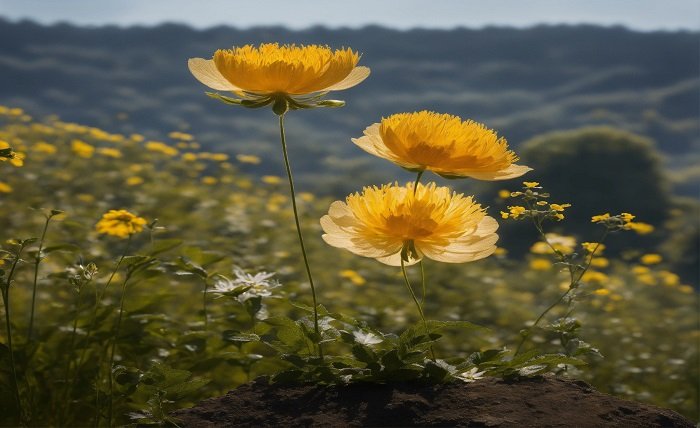The tundra biome, a region where low temperatures and brief growing seasons prevent tree growth, is home to many types of plants with exceptional resilience. Most other types of vegetation would not thrive in the environments that these plants have adapted to. We’ll look at the diversity and special adaptations of tundra plants in this blog post.
The extreme tundra environment

Permafrost, minimal biodiversity, a harsh climate, and restricted drainage are characteristics of the tundra. Here, plants have to contend with a short growing season, freezing temperatures, and inadequate soil fertility.
Experts in Adaptation: Strategies for Surviving in the Arctic
To survive the severe environment, tundra plants have evolved some coping mechanisms. They commonly grow in cushion or mat formations to retain heat, are low to the ground to prevent wind damage, and have thin leaves to minimize water loss.
Detailed Examination of tundra plants
The Arctic Willow, Tufted Saxifrage, and Arctic Moss are a few of the most prevalent tundra plants. Every one of these species has unique adaptations that enable them to survive in the harsh environment of the tundra.
Climate Change’s Effects on Tundra Vegetation
Climate change poses a serious threat to the tundra biome. Warmer temperatures can cause permafrost thawing, which can impact plant survival and change the environment that supports them.
Detailed Examination of Tundra Flora
The Arctic Moss
Arctic moss is a low-growing, submerged plant that is essential to the tundra ecology.
Arctic Willow
Small and creeping, the Arctic Willow has done a good job of adapting to the tundra climate.
Rosebay Lapland
Another plant that does well in the tundra is the Lapland Rosebay, an evergreen prostrate shrub.
Saxifrage with tufts
Tufted saxifrage, a perennial that resembles a cushion, is prevalent throughout the tundra.
Arctic Poppies
The Arctic Poppy, which is well-known for its lone, papery blossom, is unique in that it can draw pollinators even in the winter.
Bell Arctic Heather
The Arctic Bell Heather, a pioneering woody plant in the Arctic, illustrates the early phases of ecological succession.
Interesting trivia: Were You Aware?
To stop ice from forming, several tundra plants have compounds similar to antifreeze within their cells.
The tundra biome supports about 1,700 plant species despite its harsh environment.
Many arctic plants have a low threshold for photosynthetic temperatures, often barely above freezing.
The resilience and sluggish growth of the Arctic Willow allow it to live up to 100 years.
In summary
Tundra plants play an essential part in the Arctic ecology. It is even more important to comprehend their adaptations when the region gets warmer due to climate change. In addition to surviving, these hardy species modify the temperature of the soil, the cycles of nutrients, and the concentrations of carbon in the atmosphere. Let’s honor these marvels of nature and strive to protect the fragile balance of our planet.
FAQ
Which flora is typical of the tundra? Lapland Rosebay, Arctic Willow, and Arctic Moss are a few common tundra flora.
How do plants in the tundra respond to the cold? In order to preserve heat, tundra plants grow low to the ground, produce little leaves, and create cushion-like structures.
What makes studying tundra flora important? By studying tundra plants, we can better understand how ecosystems adapt to harsh circumstances and how climate change affects these fragile areas.
How do tundra plants respond to climate change?Permafrost thawing brought on by climate change may modify the habitat of tundra plants, posing a harm to them. Additionally, it makes it possible for alien species to outcompete native plants by spreading into the tundra.
Which plants grow in the tundra? Arctic Willow, Bearberry, Labrador Tea, and a variety of mosses and lichens are a few examples of tundra flora.
